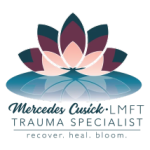In the realm of therapy, few techniques have sparked as much curiosity—and as many myths—as EMDR. Let’s shine a light on the truth beneath the tales.
1. EMDR Is Just a Quick Fix
Contrary to the belief that EMDR is a mere quick fix for trauma, it’s a comprehensive therapeutic modality requiring thorough preparation, assessment, and follow-up. The notion of immediate relief might be appealing, but EMDR’s process involves multiple phases designed to ensure a deep, lasting healing rather than a superficial, temporary reprieve. This misunderstanding could stem from its phase-based approach that might seem fast-paced compared to traditional therapy models, but each stage is crucial in building towards sustainable change.
2. Only Useful for PTSD
While it’s widely recognized for its effectiveness in treating PTSD, EMDR’s utility extends beyond this single condition. Research and clinical experience have shown that EMDR can be beneficial for a range of psychological stressors and disorders. This includes, but is not limited to, anxiety, depression, and phobias. Its application in various settings underscores the versatility of EMDR as a tool for healing, challenging the misconception that it’s only suitable for PTSD.
The adaptability of EMDR to different client needs and clinical situations further showcases its broad applicability. By targeting the psychological distress underpinning many mental health issues, EMDR facilitates a healing process that can address multiple layers of a person’s wellbeing, not just the symptoms of PTSD.
3. EMDR Doesn’t Involve Talking About Trauma
A common misunderstanding about EMDR is that it bypasses the need to talk about trauma, which is not entirely accurate. While it’s true that EMDR doesn’t rely on traditional talk therapy as its primary mechanism, discussing aspects of the traumatic experience is a critical part of the treatment process. This phase aids in targeting and reprocessing distressing memories. EMDR trained therapists guide clients through recollections in a controlled, therapeutic context, bridging the gap between non-verbal memory processing and verbal articulation of trauma.
4. It’s All About Eye Movements
Although eye movements are a distinctive feature of EMDR, suggesting that they are the sole component oversimplifies and misrepresents the method. EMDR also incorporates elements of mindfulness, cognitive behavioral therapy, and exposure therapy, among other therapeutic techniques. The eye movements (or bilateral stimulations) work as a part of a larger, integrated approach designed to facilitate the brain’s natural healing process when it comes to traumatic memories, not as the standalone therapeutic action.
Moreover, alternative forms of bilateral stimulation like auditory beeps or tactile taps are sometimes used, catering to the client’s comfort and therapeutic needs. This flexibility highlights EMDR’s multifaceted nature and its foundation in neurological principles rather than a singular focus on eye movements.
5. No Scientific Basis
Despite misconceptions, EMDR rests on a robust scientific foundation. Numerous research studies back its efficacy for trauma and other psychological distress. Critics often question the scientific underpinning of EMDR due to its innovative approach, but an abundance of evidence in the form of clinical trials and meta-analyses supports its effectiveness and safety. Stringent guidelines for practice and endorsements from leading mental health organizations worldwide affirm EMDR’s status as a well-established, research-based method.
6. Only Effective for Adults
It’s a common myth that EMDR is only effective for adults, but evidence suggests it can be profoundly beneficial for children and adolescents as well. Tailored approaches and adjustments are made to fit the developmental needs of younger clients, ensuring that EMDR can be a gentle yet effective therapeutic option for individuals across the lifespan. This versatility shines a light on the adaptability of EMDR therapy to accommodate a wide range of clients, debunking the notion of its applicability being limited to adult populations.
About the Author:
I am Mercedes Cusick, LMFT, a certified EMDR trauma therapist specializing in EMDR intensives. I am dedicated to addressing trauma-related challenges and improving mental health outcomes. My commitment to trauma therapy is driven by its significant therapeutic effects, particularly for individuals grappling with complex trauma, PTSD, toxic relationships, and narcissistic abuse.
Serving a diverse community with dedication and empathy, I am proud to support individuals in the Los Angeles area, specifically in Woodland Hills, Calabasas, Agoura, Hidden Hills, West Hills, Northridge, Winnetka, Tarzana, Studio City, Sherman Oaks, Malibu, and Beverly Hills. Together, we can journey toward healing and resilience.







